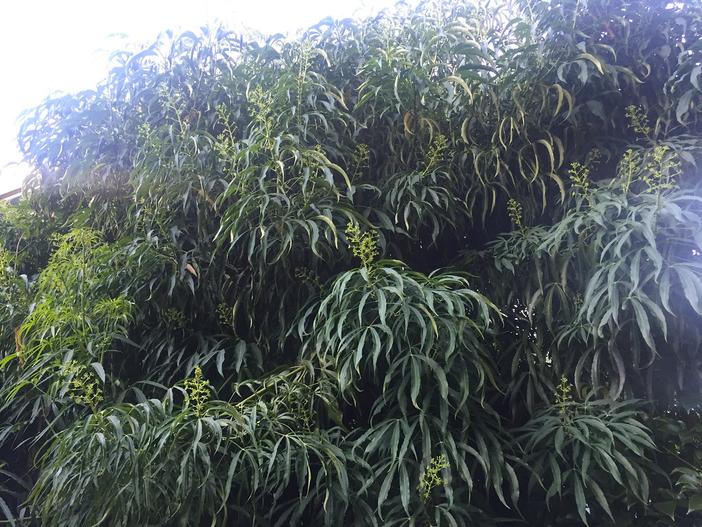Delavay’s Metapanax
(Metapanax delavayi)
Delavay’s Metapanax (Metapanax delavayi)
/
/

Megan Hansen
CC BY-SA 2.0
Image By:
Megan Hansen
Recorded By:
Copyright:
CC BY-SA 2.0
Copyright Notice:
Photo by: Megan Hansen | License Type: CC BY-SA 2.0 | License URL: https://creativecommons.org/licenses/by-sa/2.0/ | Uploader: MeganEHansen | Publisher: Flickr




Estimated Native Range
Summary
Metapanax delavayi, commonly known as Delavay’s Metapanax, is an evergreen shrub or small tree native to the understory of temperate forests in the mountainous regions of southwestern China. It typically grows up to 12 feet tall and is noted for its glossy, palmate leaves which contribute to its lush appearance. The plant produces clusters of small, white flowers that are subtly fragrant, blooming in the late spring to early summer. The flowers are not particularly showy but add a delicate texture to the foliage. Delavay’s Metapanax is appreciated for its attractive, deep green leaves which provide year-round interest in the garden.
Delavay’s Metapanax is a choice plant for woodland gardens, shaded borders, and as an understory plant in larger landscapes. It thrives in partial shade, requiring protection from intense afternoon sun to prevent leaf scorch. This species prefers consistently moist, well-drained soils rich in organic matter, mirroring the humus-rich forest floors of its native habitat. While it is relatively low-maintenance once established, it may require additional watering during prolonged dry periods. It is not commonly afflicted by serious pests or diseases, but it can be sensitive to root rot if planted in poorly drained soils. Delavay’s Metapanax is not widely known for its invasiveness outside its native range, but as with all non-native plants, gardeners should monitor its growth and spread.CC BY-SA 4.0
Delavay’s Metapanax is a choice plant for woodland gardens, shaded borders, and as an understory plant in larger landscapes. It thrives in partial shade, requiring protection from intense afternoon sun to prevent leaf scorch. This species prefers consistently moist, well-drained soils rich in organic matter, mirroring the humus-rich forest floors of its native habitat. While it is relatively low-maintenance once established, it may require additional watering during prolonged dry periods. It is not commonly afflicted by serious pests or diseases, but it can be sensitive to root rot if planted in poorly drained soils. Delavay’s Metapanax is not widely known for its invasiveness outside its native range, but as with all non-native plants, gardeners should monitor its growth and spread.CC BY-SA 4.0
Plant Description
- Plant Type: Shrub, Tree
- Height: 8-15 feet
- Width: 6-10 feet
- Growth Rate: Moderate
- Flower Color: Green, White
- Flowering Season: Spring, Summer
- Leaf Retention: Evergreen
Growth Requirements
- Sun: Full Sun, Part Shade
- Water: Medium
- Drainage: Medium
Common Uses
Border Plant, Low Maintenance
Natural Habitat
Temperate forests in the mountainous regions of southwestern China
Other Names
Common Names: Delavay’s Metapanax
Scientific Names: , Metapanax delavayi, Acanthopanax delavayi, Macropanax delavayi, Metapanax delavayi var. longicaudatus, Nothopanax delavayi, Nothopanax delavayi var. longicaudatus, Panax delavayi, Pseudopanax delavayi, Pseudopanax delavayi subsp. longicaudatus,
GBIF Accepted Name: